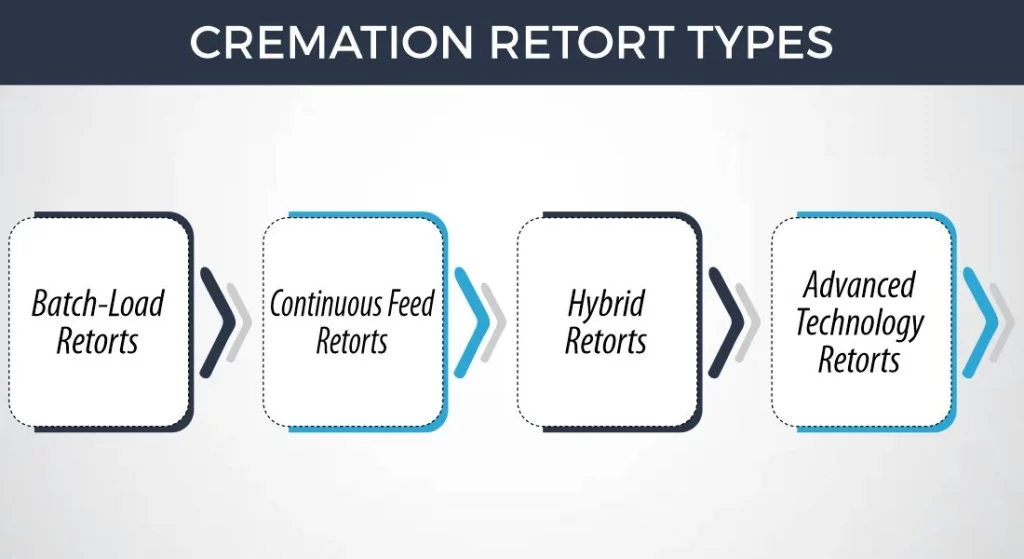In the quiet spaces where memories linger, there’s an important thing called a cremation retort. It might not grab attention, but it plays a big role when we say our goodbyes. Think of it as a special chamber where stories turn into soft ashes, carrying the essence of someone we loved.
Let’s take a journey into the world of cremation retorts. We’ll learn about what they do, understand how much they cost, and explore where we can find them for sale. It’s like peeking behind the scenes of a respectful goodbye, where these machines work quietly but hold immense significance. Join us as we uncover the secrets and importance of these special devices that help us honor the ones we’ve lost.
What are Cremation Retorts?
Cremation retorts are specialized chambers or furnaces designed specifically for the purpose of conducting cremation processes. These structures are constructed using high-quality materials like stainless steel and are engineered to withstand and contain extremely high temperatures necessary for the cremation of human remains.
Within these retorts, the deceased individual, placed in a casket or container, undergoes the cremation process. Cremation retorts come in various sizes and configurations to accommodate different capacities and operational needs of crematoriums. They are a crucial component of the overall cremation process, ensuring the respectful and dignified transformation of human remains into ashes.
Functionality of Cremation Retorts
Cremation retorts serve as specialized chambers designed to facilitate the dignified transformation of human remains into ashes through the process of cremation. These retorts function as high-temperature furnaces, capable of withstanding extreme heat levels typically ranging from 1,400 to 1,800 degrees Fahrenheit (760 to 982 degrees Celsius).
The functionality of cremation retorts involves several key aspects:
- Heating Process: Once the deceased, placed in a casket or container, is transferred into the retort, the chamber is heated using natural gas or propane. The intense heat generated within the retort initiates the cremation process by breaking down the body tissues and organic matter.
- Decomposition: The high temperatures within the retort cause the organic matter to decompose rapidly. This process results in the reduction of the body to bone fragments.
- Further Processing: The remaining bone fragments undergo further processing to reduce them into a fine powder, commonly known as cremated remains or ashes.
- Emission Control: Cremation retorts often consist of secondary chambers or filtration systems designed to control emissions and minimize the release of particulate matter and pollutants into the environment.
Overall, the functionality of cremation retorts ensures the efficient and respectful conversion of human remains into ashes while adhering to established industry standards and environmental regulations.

Cremation Retort Types
Cremation retorts come in various types and designs, each catering to different operational needs and capacities within crematoriums. These types differ in size, functionality, and the way they handle cremation processes. Here are some common types of cremation retorts:
1- Batch-Load Retorts
Batch-load retorts are among the most common types used in crematoriums. They handle one cremation at a time, where the deceased individual, placed in a casket or container, is loaded into the retort for the cremation process. Once the cremation is complete, the ashes are collected before loading the retort for the next cremation.
2- Continuous-Feed Retorts
Unlike batch-load retorts, continuous-feed retorts are designed to handle multiple cremations throughout the day without requiring downtime between each process. These retorts allow for a more continuous operation, enabling the cremation of multiple deceased individuals without cooling down or reloading after each cycle.
3- Hybrid Retorts
Hybrid retorts combine features of both batch-load and continuous-feed designs. They offer the flexibility to conduct individual cremations as well as accommodate higher capacity when necessary, making them versatile for varying operational demands within crematorium facilities.
4- Advanced Technology Retorts
Some modern cremation retorts incorporate advanced technology aimed at enhancing efficiency, reducing emissions, and improving the overall cremation process. These retorts may include features such as computerized controls, emission control systems, and advanced filtration mechanisms to meet stringent environmental regulations.
Each type of cremation retort has its own advantages and considerations in terms of capacity, operational efficiency, and compliance with industry standards. The choice of retort type often depends on the specific needs, volume of cremations, and technological preferences of the crematorium or funeral home.
Cost Considerations of Cremation Retorts
The cost considerations surrounding cremation retorts encompass various factors that influence their pricing and ongoing expenses within a crematorium or funeral home setting. These factors contribute to the overall investment and operational costs associated with acquiring and using a cremation retort. Here are key cost considerations:
Initial Purchase Price
The initial cost of acquiring a cremation retort varies based on its size, brand, features, and technology. Smaller retorts may range from approximately $20,000 to $50,000, while larger, high-capacity retorts can cost anywhere from $100,000 to $500,000 or more. Specialty or advanced technology retorts may fall on the higher end of the price spectrum.
Ongoing Operational Expenses
Beyond the initial purchase price, operational expenses include ongoing costs for fuel, maintenance, and compliance with environmental regulations. The type of fuel used (natural gas, propane, etc.) and the efficiency of the retort significantly impact operational expenses.
Maintenance and Repairs
Regular maintenance and occasional repairs are essential to ensure the proper functioning and longevity of a cremation retort. Maintenance costs may include routine servicing, part replacements, and repairs, which can add to the overall expenditure over time.
Compliance and Upgrades
Adhering to environmental regulations and industry standards may require upgrades or modifications to the retort system, adding to the overall cost. Upgrades aimed at improving efficiency, reducing emissions, or meeting new regulatory requirements might necessitate additional investments.
Total Cost Analysis
A comprehensive analysis of the total cost of ownership considers not only the upfront purchase price but also the cumulative expenses associated with operation, maintenance, and potential upgrades or modifications throughout the retort’s lifespan.
Choosing a Cremation Retort for Sale
Selecting a cremation retort for sale involves careful considerations and assessments to ensure that the chosen equipment aligns with the operational needs, efficiency requirements, and budget constraints of a crematorium or funeral home. Here’s a guide to choosing the right cremation retort:
Capacity and Size
Evaluate the expected demand and cremation volume to determine the appropriate size of the retort. Consider the available space within the facility to accommodate the retort without compromising operational efficiency.
Efficiency and Technology
Assess the features and technology offered by different retorts. Consider options that enhance energy efficiency, reduce fuel consumption, and comply with environmental standards regarding emissions and filtration systems.
Reputation and Support
Research and select reputable manufacturers or suppliers known for producing reliable and high-quality cremation retorts. Consider factors such as warranty, after-sales support, and maintenance services offered by the provider.
Budget and Financing
Determine a realistic budget for purchasing the cremation retort. Explore financing options or payment plans that fit within the financial capabilities of the crematorium or funeral home.
Compliance and Regulations
Ensure that the chosen retort complies with local regulations, industry standards, and environmental requirements related to emissions, filtration, and operational practices.
Technological Advancements
Consider retorts equipped with advanced technology, such as computerized controls, remote monitoring capabilities, or features that enhance operational efficiency and safety.
Supplier Comparisons
Request quotes and proposals from multiple suppliers or manufacturers. Compare specifications, pricing, warranties, and additional services offered to make an informed decision.
Future Needs and Scalability
Anticipate future growth and changes in operational demands. Choose a retort that allows for scalability or upgrades if the facility’s needs expand over time.
By carefully evaluating these factors and conducting thorough research, crematoriums and funeral homes can make informed decisions when purchasing a cremation retort for sale. Finding the right fit ensures that the chosen equipment meets operational requirements, maintains compliance, and upholds the dignity and respect for the departed in the cremation process.
Cremation Retort for Sale – Finding the Right Fit
Numerous suppliers and manufacturers offer cremation retorts for sale. Conducting thorough research, seeking recommendations, and comparing quotes from multiple providers can help in making an informed decision. Some well-known manufacturers in the industry include Matthews Cremation, B&L Cremation Systems, and American Crematory Equipment Co.
Conclusion
Cremation retorts play an integral role in the dignified and respectful handling of the deceased. Understanding their functionality, cost considerations, and available options for sale is crucial for crematoriums and funeral homes seeking to invest in this essential equipment.
By carefully assessing needs, budget, and technological advancements, establishments can choose a cremation retort that aligns with their operational requirements while upholding the reverence for those who have passed away.

Meet Haider, our expert Life Insurance Content Writer and Editor. With a passion for clarity, he simplify the complex world of life insurance, delivering informative, polished content tailored to our clients’ needs.







